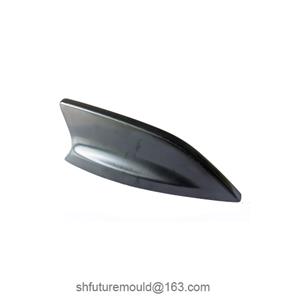Principles for Designing Cooling Circuits in Precision Injection Molds
The design of cooling circuits in precision injection molds is a critical factor affecting product quality and production efficiency. A well-designed cooling circuit ensures uniform cooling of the molded part, reduces cycle time, and improves dimensional accuracy and surface finish.
I. Principle of Uniform Cooling
Importance of Temperature Uniformity: In precision injection molding, uniform mold temperature is crucial for part quality. Excessive temperature differences between different parts of the mold can lead to uneven shrinkage of the molded part.
Methods to Achieve Uniform Cooling: Balanced Cooling Channel Layout: Cooling channels should be distributed symmetrically around the mold cavity and core. For molds with complex shapes, the layout should be tailored to the specific part geometry.
Controlled Cooling Channel Spacing: The spacing between cooling channels should be appropriate. Too small a spacing can lead to excessive local cooling, while too large a spacing can result in insufficient cooling in certain areas. The spacing is typically determined based on mold size, part wall thickness, and other factors, usually within a range of 2 to 5 times the cooling channel diameter.
II. Principle of Efficient Cooling
Significance of Improving Cooling Efficiency: Efficient cooling can shorten the injection molding cycle. In precision molding, shorter cycle times can increase production efficiency without compromising quality. Rapid cooling also allows for better control of part dimensional accuracy. Since the plastic solidifies more quickly in the mold, it can be more accurately confined to the dimensions of the mold cavity, reducing dimensional deviations caused by shrinkage during prolonged cooling.
Strategies to Enhance Cooling Efficiency: Increase Coolant Flow Rate: Select a suitable coolant (e.g., water, oil) and ensure an adequate flow rate through the cooling circuit. The diameter of the cooling channels should also be designed to accommodate the required flow rate, typically ranging from 8 to 12mm.
III. Principle of Adapting to Part Geometry
Purpose of Adapting to Part Geometry: The layout of the cooling circuit should be designed based on the shape of the molded part to ensure adequate cooling of all sections. For parts with special features such as ribs or undercuts, the cooling circuit design should focus on these areas.
Layout Based on Part Geometry: Cooling for Thin-Wall Sections: For thin-walled parts or thin-walled sections of parts, cooling channels should be located close to the cavity surface to ensure rapid heat removal. Since thin-walled sections have a small heat capacity, rapid cooling prevents them from being affected by the heat from thicker sections and deforming during cooling.
Cooling for Complex Structures: For parts with complex structures, such as those with internal cavities or undercuts, the cooling circuit can be designed using multiple layers or sections.
IV. Principle of Ease of Processing and Maintenance
Considerations for Processing Convenience: The design of the cooling circuit should consider the manufacturability of the mold. The shape of the cooling channels should be as simple and regular as possible, avoiding excessive bends and intersections to reduce the difficulty of mold machining.
Requirements for Maintenance Convenience: Cooling circuits should be easy to clean and maintain. Over time, the coolant can accumulate scale and debris, clogging the cooling channels.




